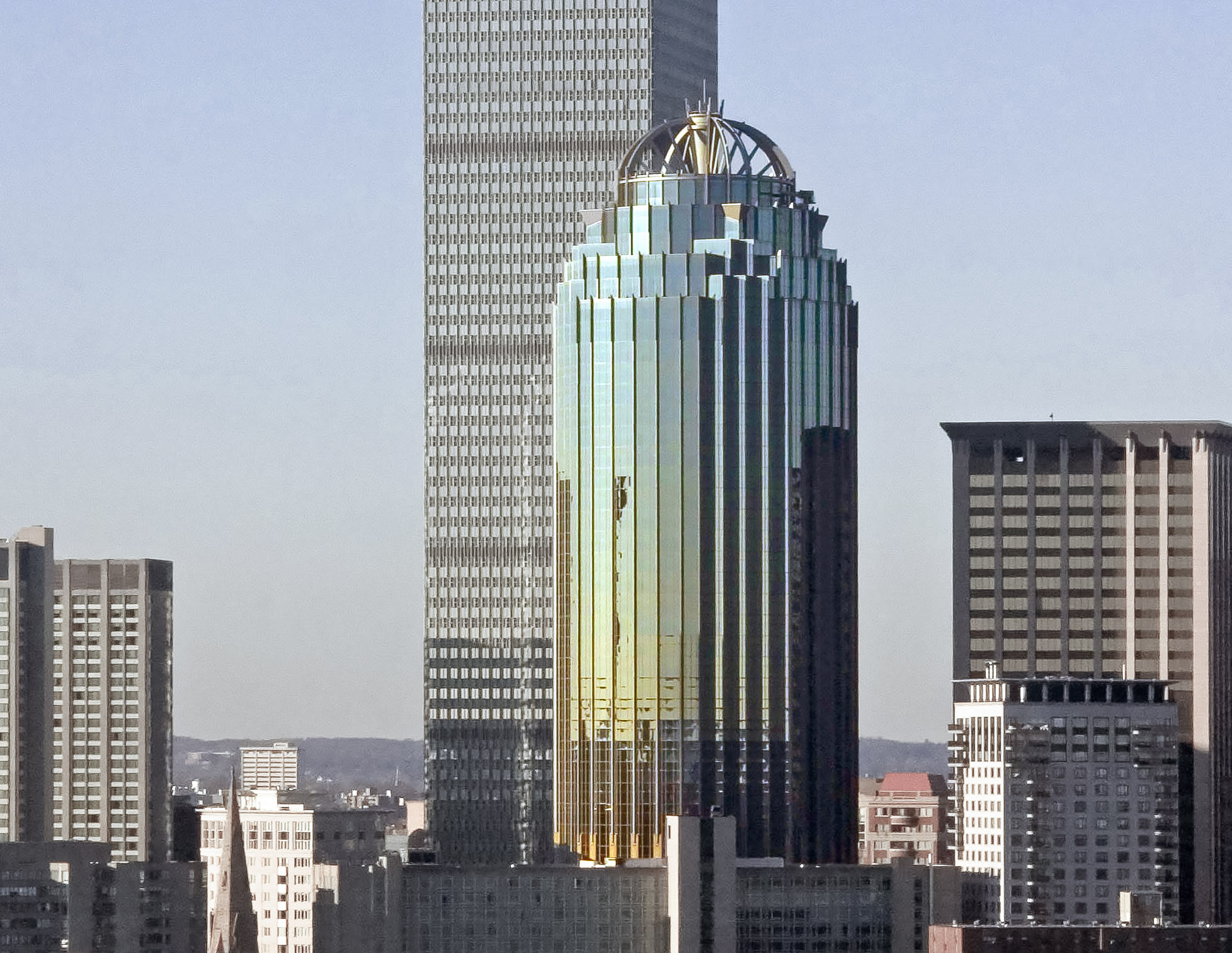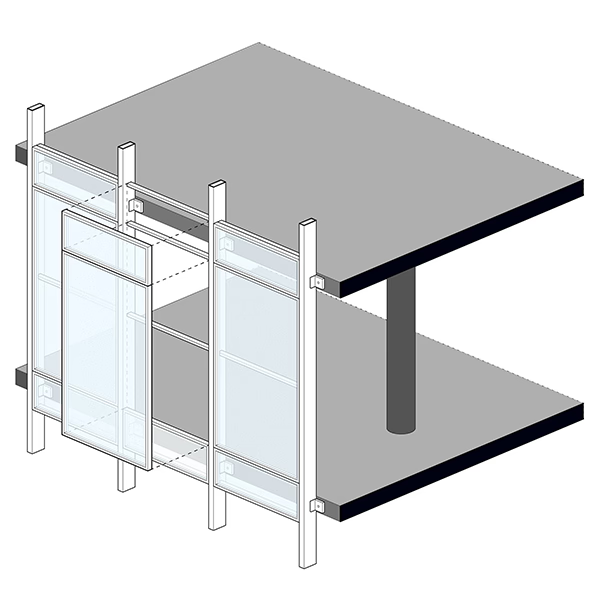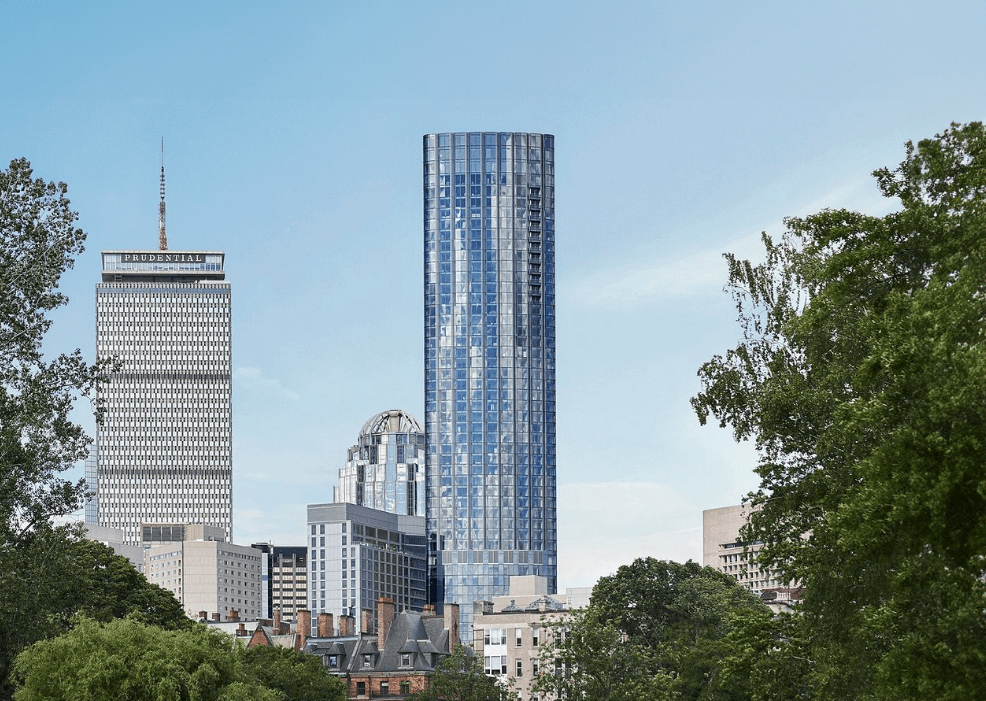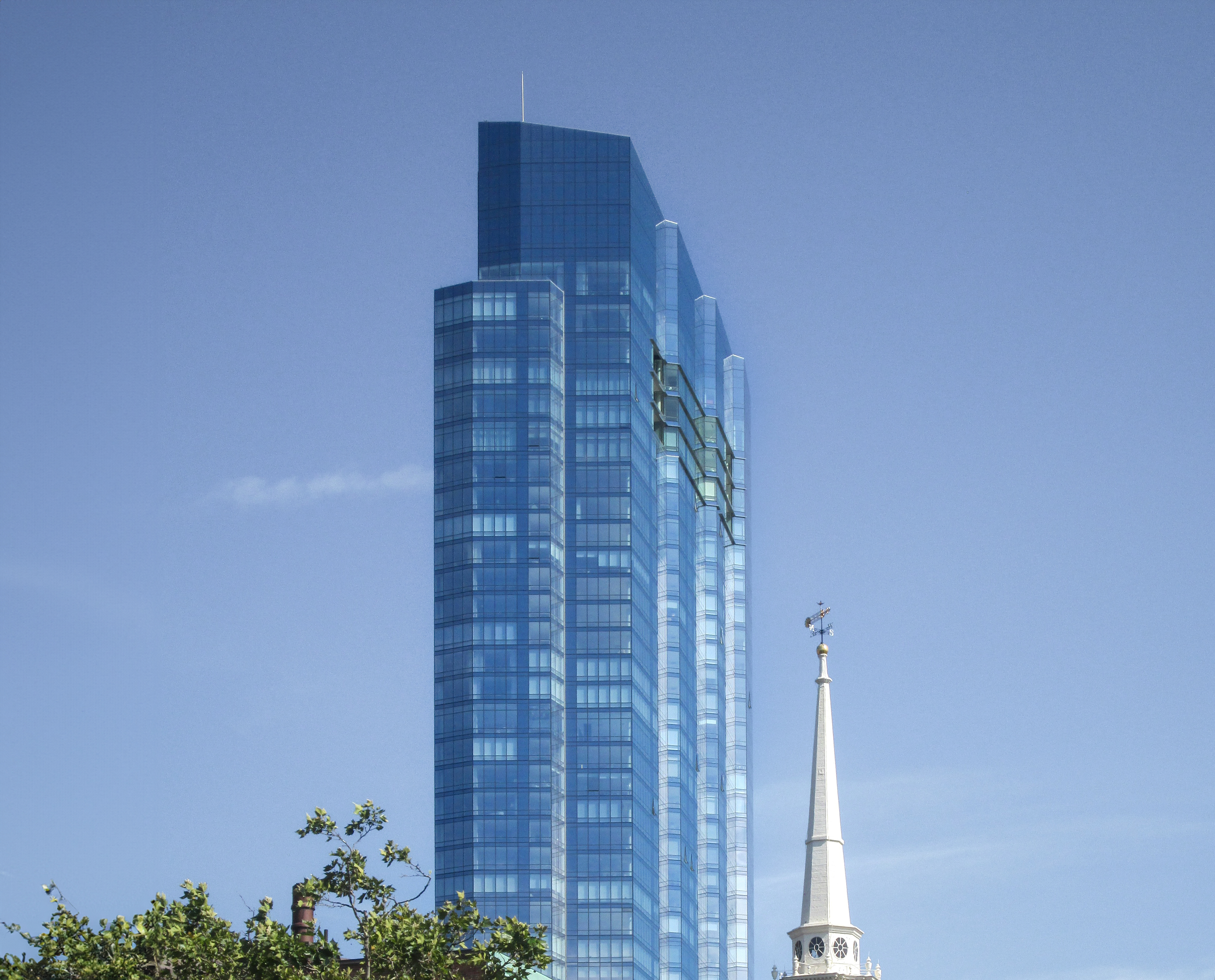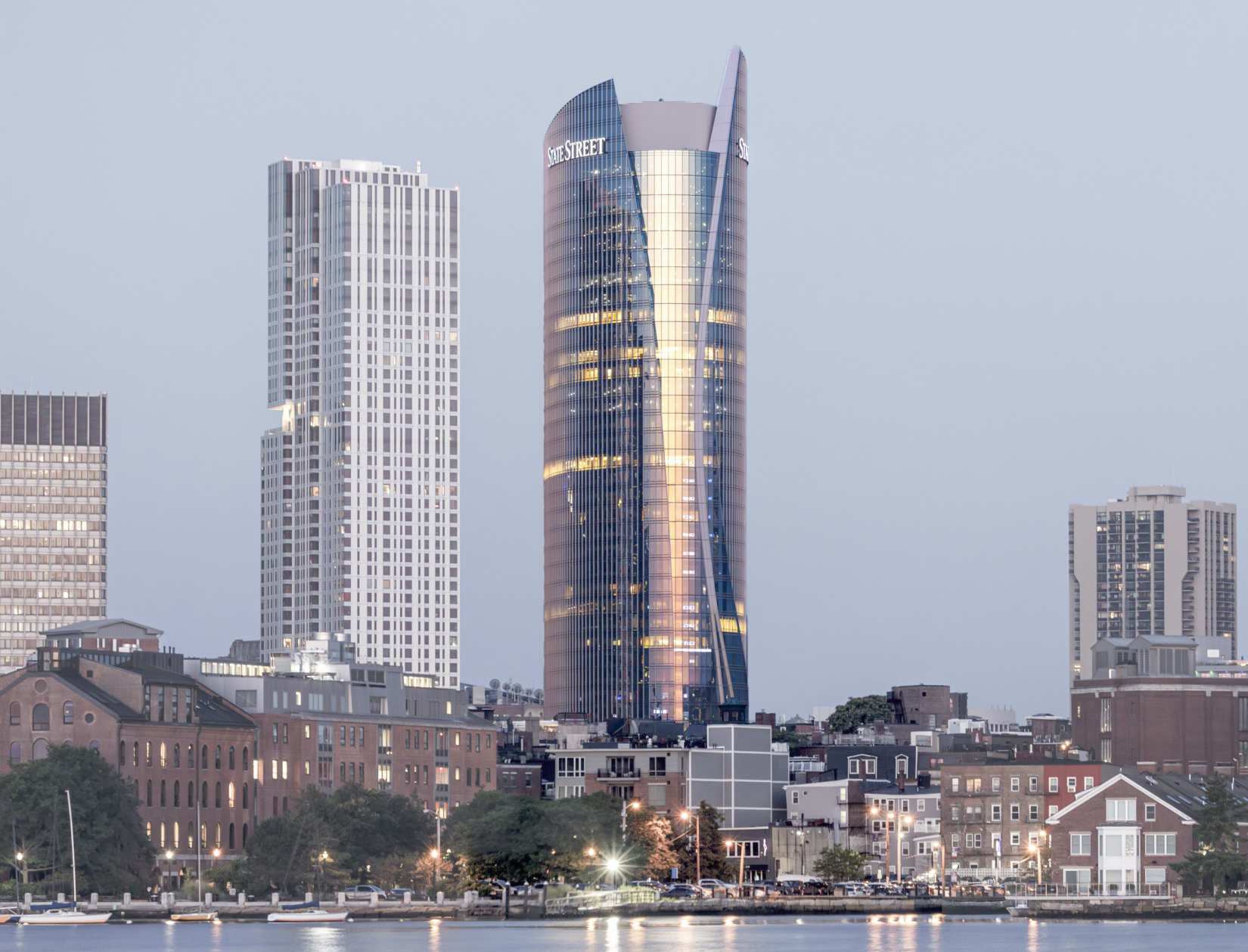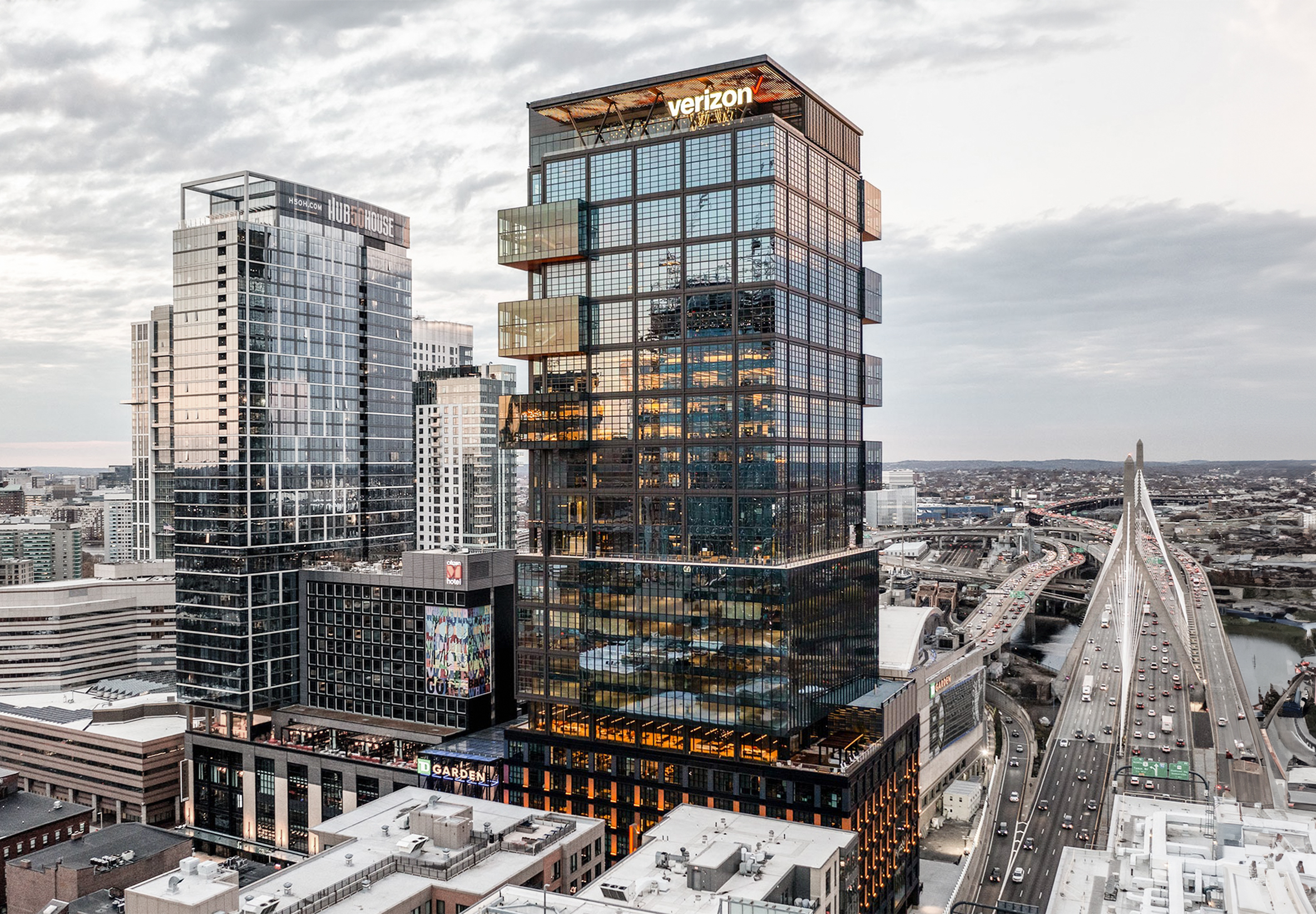The 111 Huntington Avenue Building is a Contemporary skyscraper designed by CBT Architects, and built between 1999 and 2002 in Boston, MA.
111 Huntington Avenue Building is not the only name you might know this building by though. The building is, or has also been known as the R2-D2 Building.
Its precise street address is 111 Huntington Avenue, Boston, MA. You can also find it on the map here.
The 111 Huntington Avenue Building has received multiple architecture awards for its architectural design since 2002. The following is a list of such prizes and awards:
- Emporis Skyscraper Award in 2002
- Global Award for Excellence, Urban Land Institute in 2006
The building is part of the Prudential Center Complex, which also includes the Prudential Tower.
At street level, the building is integrated with a five-story podium that connects to the Prudential Center and serves as a transition between the tower and the street..
